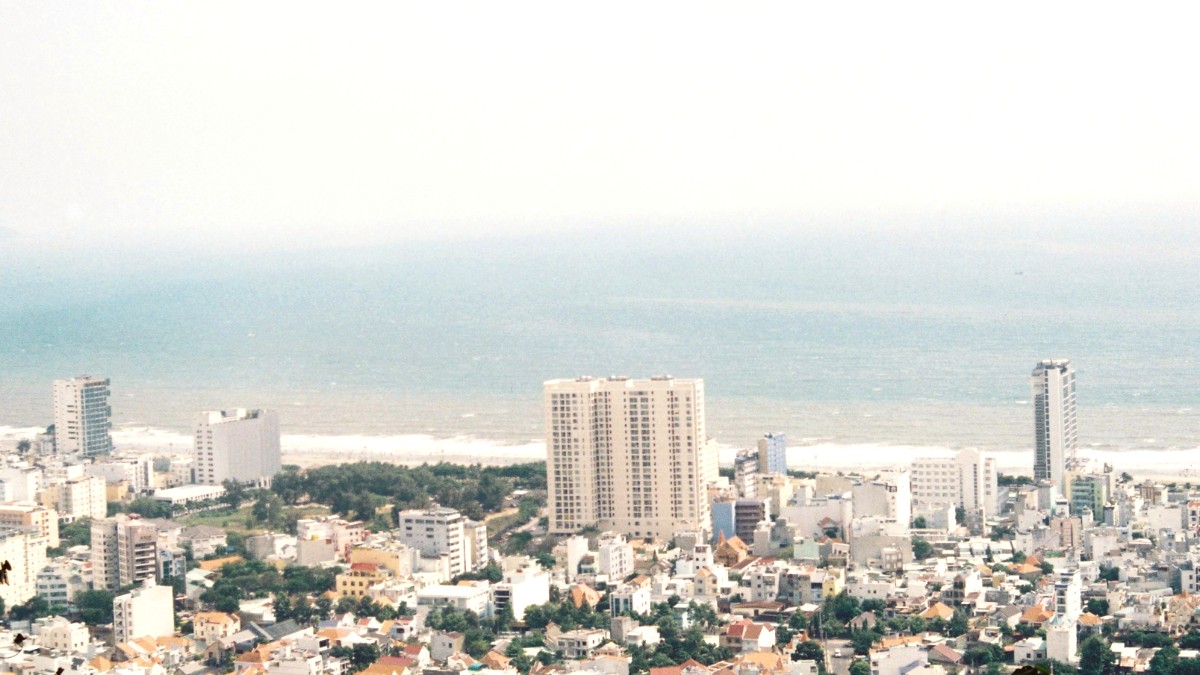
Around Ho Chi Minh City, Vietnam
Vung Tau's identity as a fishing port and a former French colonial resort shapes its food. The city's cuisine draws heavily from the fresh bounty of the South China Sea. It shares many characteristics with general Southern Vietnamese cuisine, known for its balance of sweet, sour, salty, and spicy elements, often incorporating coconut milk and fresh herbs.
Expect an emphasis on fresh seafood, including prawns, squid, various types of fish, crabs, and a wide array of snails and shellfish. Other common ingredients include rice flour, fish sauce (nuoc mam), various fresh herbs (mint, basil, coriander), chili, and coconut milk.
Begins early, typically from 6:00 AM to 9:00 AM. Many locals grab quick street food or a bowl of noodle soup.
Around noon, from 11:00 AM to 1:00 PM.
Generally earlier than in many Western countries, typically from 6:00 PM to 8:00 PM. Street food stalls and night markets may stay open much later.
Mini savory pancakes made from rice flour, coconut milk, and turmeric. Each often has a fresh shrimp, mung beans, and green onions. Served crispy with fresh herbs, lettuce, and fish sauce for dipping.
Find at: Quán Bánh Khọt Gốc Vú Sữa (54 Nguyễn Thái Học) and Bánh Khọt Miền Tây (59 Bà Triệu).
A popular and flavorful hotpot with fresh stingray meat. The broth is typically sour and spicy, infused with bamboo shoots and various local herbs.
Find at: Lẩu Cá Đuối Hoàng Minh (40 Trương Công Định) and Lẩu Cá Đuối Út Mười (16 Trương Công Định).
Noodle soup brimming with fresh seafood. Vung Tau has an incredible variety of cooked snails and shellfish, prepared in numerous ways.
Find at: Numerous street stalls and seafood restaurants, especially along Back Beach and in the night market area.
Limited options, mostly at high-end hotel restaurants (The Imperial Hotel or Pullman Vung Tau). These have upscale international and refined Vietnamese cuisine.
Many seafood restaurants along the beaches and in the city center. They have a mix of local Vietnamese dishes and some international options, often specializing in fresh seafood.
These have the most authentic and affordable dining experiences. Abundant throughout the city, especially around popular tourist areas and local neighborhoods.
While Vietnamese cuisine uses much meat and fish sauce, vegetarian (ăn chay) options are available. Look for specialized vegetarian restaurants, often catering to Buddhist communities.
Gluten-free dining can pose challenges. Many Vietnamese dishes use rice noodles, which are naturally gluten-free. Cross-contamination is a risk, and soy sauce often contains wheat.
Halal and kosher options are very limited in Vung Tau.
It is advisable to stick to vegetarian options or purchase certified products at larger supermarkets if available. Consider packing some non-perishable certified foods.
Available near major hotels.
Some options for familiar flavors.
Caters to expat community.
Limited, but present.
Choose your own live seafood from tanks at beachfront restaurants or the night market. They cook your choice to your preference.
Many local eateries and street food vendors set up tables directly on or near the beach. This allows you to eat with ocean views and the sound of waves.
The Vung Tau Night Market has a lively, informal dining experience. You can hop from stall to stall, sampling different dishes and soaking in the energetic atmosphere.
While Vietnamese cuisine widely uses meat and fish sauce, vegetarian (ăn chay) options exist. Specialized vegetarian restaurants often cater to Buddhist communities. Many pagodas also serve vegetarian meals.
Gluten-free dining can pose challenges. Many Vietnamese dishes use rice noodles, which are naturally gluten-free. Cross-contamination is a risk, and soy sauce often contains wheat.
Using a translation app or a phrasebook with specific allergy phrases has high value. Write down your allergies on a card in Vietnamese to show to restaurant staff. Avoid deep-fried items unless explicitly confirmed they are cooked in a dedicated gluten-free fryer.
Formal cooking classes are fewer in Vung Tau. Some local guesthouses or private guides might have informal cooking experiences. Food tours are available, often focusing on exploring the city's street food scene.
Occasionally, local food festivals might take place. These are opportunities to sample a wide array of local dishes and experience the lively atmosphere.
Choose your own live seafood from tanks at beachfront restaurants or the night market. They cook your choices to your preference.
Many local eateries and street food vendors set up tables directly on or near the beach. Enjoy your meal with ocean views and the sound of waves.
The Vung Tau Night Market has a lively, informal dining experience. Sample different dishes and soak in the energetic atmosphere.
Always try local specialties, especially the fresh seafood. Don't be afraid to try street food from busy, popular stalls. They often mean good food and quick turnover.